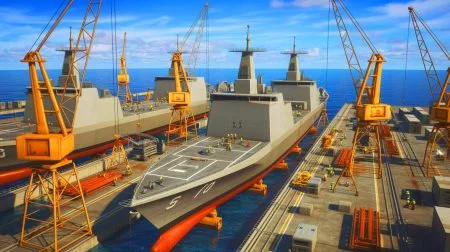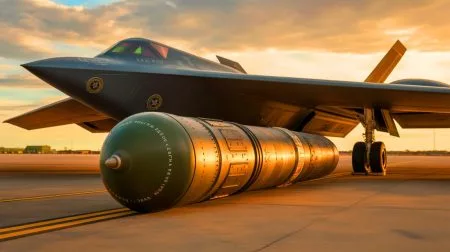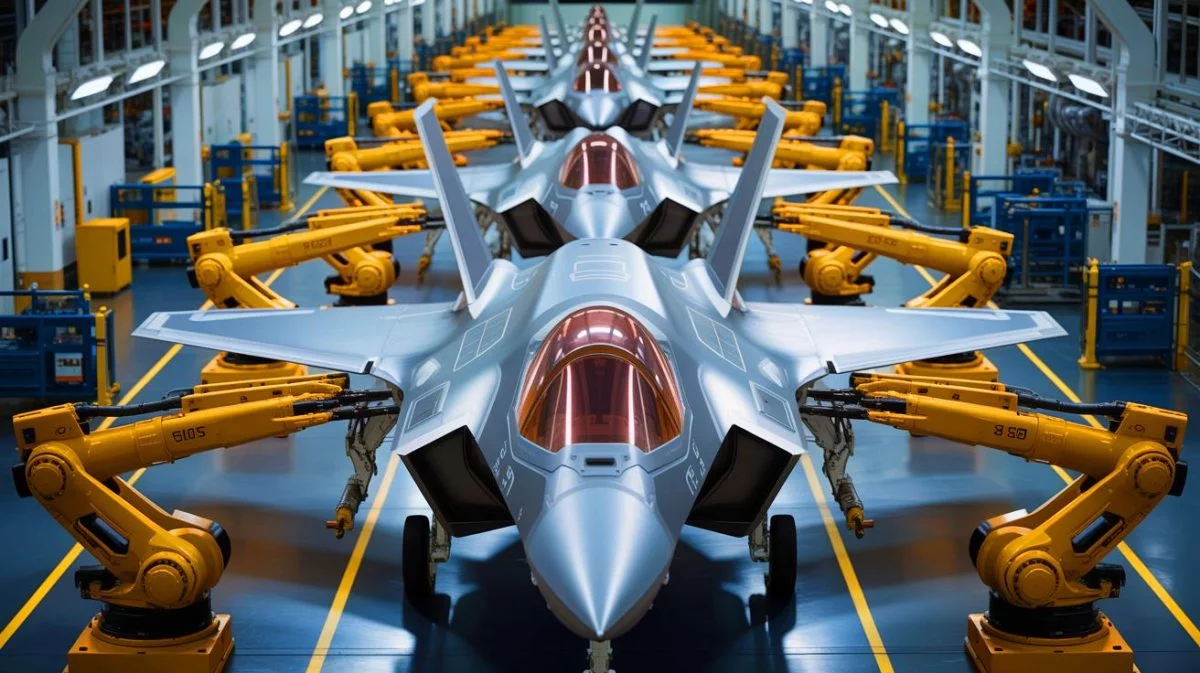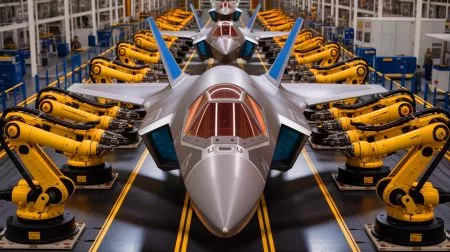| IN A NUTSHELL |
|
In recent developments within the aerospace industry, Northrop Grumman, a prominent American defense contractor, has made significant strides in the production of the F-35 Lightning II fighter jets. By leveraging advanced manufacturing technologies, the company has managed to accelerate production rates to an impressive interval of every 30 hours per jet. This achievement is crucial for meeting both national and international demands for these advanced aircraft. The breakthrough has not only drawn global attention but also signifies a pivotal moment in aerospace manufacturing, showcasing the potential of cutting-edge automation and robotics in defense production.
The Core Component of All F-35 Variants
The central fuselage of the F-35 is a critical structural component integral to all three variants of this state-of-the-art fighter jet. It encompasses a complex inlet system and forms a crucial part of the aircraft’s internal weapons bay and fuel reservoir. Northrop Grumman also manufactures the aircraft’s operable doors, including the weapons bay doors and door actuation systems. The precise alignment of edges and specialized coatings on the central fuselage contribute significantly to the unique capabilities of the F-35. To date, Northrop Grumman has delivered over 1,400 central fuselages for the F-35 program, highlighting the success and efficiency of their production process. This component’s role is fundamental, underscoring its importance in the overall performance and operational effectiveness of the F-35.
Integrated Automated Technology
The Integrated Assembly Line (IAL) at Northrop Grumman utilizes advanced robotics and automation technologies to enhance production capacity and assembly efficiency. This state-of-the-art technology achieves engineering tolerances that are difficult to attain manually. The production facility accommodates all three F-35 variants within the same line, integrating production flight articles, unique development test articles, and country-specific production configurations. Among the automated technologies employed are automated guided vehicles, robotic drilling of inlet channels, molded coatings, and automated drilling systems. These technologies significantly improve quality control while reducing the time and labor required for producing the F-35’s central fuselage. The integration of automation in this process exemplifies the innovative approach to modern aerospace manufacturing.
One of the Most Advanced Manufacturing Facilities
Northrop Grumman’s IAL is touted as one of the most advanced manufacturing facilities ever assembled for military aircraft production. The facility leverages automated technologies that blend human and machine strengths to produce the central fuselage for all three variants. Spanning the size of a football field, the IAL comprises over 3,000 parts and up to 115 assembly positions. Annually, the facility assembles 10 million parts, with the entire process taking eight months to complete a central fuselage. However, due to the facility’s efficiency, a fuselage is completed every 30 hours, significantly boosting production capacity. This remarkable output is a testament to the facility’s sophisticated design and operational efficiency, marking a new era in aircraft production.
Strategic Partnership and Future Outlook
As a key partner in the F-35 Lightning II industrial consortium, Northrop Grumman plays a vital role in developing, producing, and supporting all three variants of this fifth-generation fighter jet. Beyond producing central fuselages, the company develops the AN/APG-81 AESA radar, communication subsystems, and supports the EODAS. Northrop Grumman is also responsible for developing mission systems, mission planning software, and vehicle systems, while leading the development of pilot and maintenance training systems. This comprehensive involvement in the F-35 program solidifies Northrop Grumman’s position as a leading player in the defense industry. The company’s advancements in production technology raise important questions about the future of aerospace. How will this accelerated production impact global defense strategies, and what further technological innovations might emerge in the coming years?
These advancements in aerospace manufacturing technology underscore a significant shift in the defense sector. The ability to produce complex fighter jets at such a rapid pace suggests a new era of efficiency and capability. As Northrop Grumman continues to push the boundaries of production technology, the implications for global defense and aerospace innovation are profound. What role will these technological advancements play in shaping the defense strategies of the future, and how might they influence international power dynamics?
Did you like it? 4.5/5 (30)






Wow, every 30 hours? That’s faster than my pizza delivery! 🍕✈️
Is this production rate sustainable without compromising quality?
Thank you for such an informative piece on aviation innovations! 🚀
Does this mean ticket prices will drop? Asking for a friend. 😜
The future of air travel looks promising with these advancements. Bravo!